David Auker, a 62-year-old Portland resident who has been racing and riding in the Pacific northwest since the 1970s, will once again lead his annual Thanksgiving day ride tomorrow.
The ride was first held in 1997; but this year’s edition is especially sweet given that it comes just over two years after Auker suffered a serious stroke while on a ride and spent three weeks in the hospital. (I shared more about Auker and his road to recovery when I chatted with him and his friends at his birthday celebration back in January.)
Auker’s recovery was difficult and slow and he even got lost riding in the hills near his house a few times. The same hills he has ridden for many decades.
Today, Auker shared his gratitude for life and for his long-awaited return to daily bike rides. “So now, I’m just beyond two years,” he wrote on the Oregon Bicycle Racing Association email list, “Oh so happy for life! Got my license back, got a new car — but riding every day. Here I am, almost like I was, but with shorter hair, loving being!”
The David Auker Thanksgiving Fixed Gear Ride (my name for it, not his) starts — as it has for as long as everyone I’ve asked can remember — with a big brunch at his home in Portland’s southwest hills. (If you are on the OBRA email list, you can find the address and details.)
—
If riding fixed isn’t your thing, there are a few other rides on Thanksgiving morning. Why ride on Thanksgiving? Not only has it been scientifically proven to grow your appetite; but the streets are usually very quiet on major holidays (especially downtown!).
Appetite Enhancement Ride
Organized by volunteers from Shift, this ride will meet at the Red and Black Cafe at 10:00 am and ride for about 90 minutes. Loop will go across the river into downtown. Relaxed and social pace. Details here.
Road rides:
Hammer Velo & Friends – Meet at 8:30 am at River City (706 SE Martin Luther King Jr Blvd). Two-plus hours.
Portland Wheelmen – Meet 9:30 am at 11100 NE Skidmore. More details here.
If you know of other rides going on, please share info in the comments. Have a great holiday weekend!

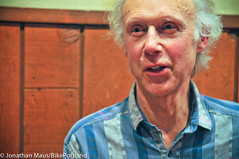
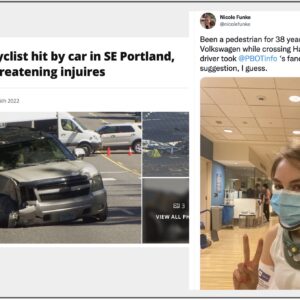
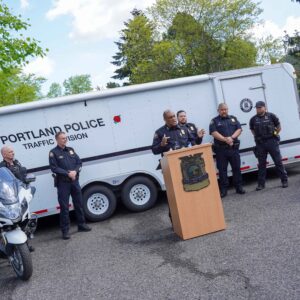
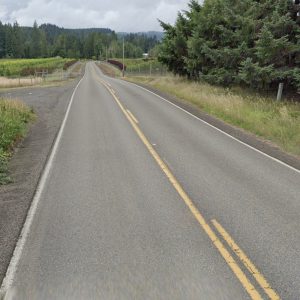
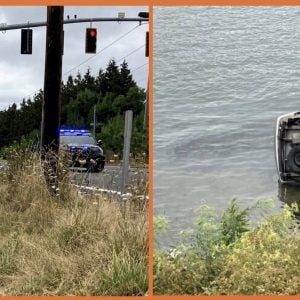
Thanks for reading.
BikePortland has served this community with independent community journalism since 2005. We rely on subscriptions from readers like you to survive. Your financial support is vital in keeping this valuable resource alive and well.
Please subscribe today to strengthen and expand our work.
Thanks for a positive story to get us in the holiday mood. Enjoy the day everyone 🙂
David on his Calfee carbon fixie and silver helmet stomping EVERYBODY at Tabor!
Jonathan:
I linked to the photos by James Mason, and, like you, was astounded by the quality of the monochromes. I have tried to get decent shots at Tabor, and failed utterly in this digital age.
Mason obviously is an exceptionally fine printer of b/w negatives. In the old days printing was the culmination of photographic art, especially at discovering the latitude latent in the exposure. Photoshopping is crude by comparison. Vide Ansel Adams.
Probably Mason was exposing Kodak TriX (ASA 400), and not pushing the development; perfect combination of latitude and grain. Accurate and extraordinarily consistent metering; perhaps 1/1,000 second at f4. Credit also Portland’s soft light, especially at Tabor.
As to equipment–certainly not large format–not likely Rollei or Hasselblad 6 cm by 6 cm. Must be Leica, rangefinder, 50 mm and longer prime focus lenses. Note that the backgrounds at Tabor show no evidence of panning, and are only slightly out of focus. Dude just stood there and released the shutter. So can I, or anyone, but with indifferent results.
Is it not odd that old black-and-white chemical photography, in the hands of a master, not only endures as art and technology, but is so superior to modern electronic digicrud at human expression?
Leica has brought out a digital monochrome body with appropriate lenses to combine the much greater sensitivity (quantum efficiency) of electronic sensors with the artistry of black-and-white film. We’ll see–or maybe not.
Body: $8,000. Lens: $8,000 Life goes on.
Actually, I never was a good printer. All of the images from Portland are made by scanning Tri-X negatives (Kodachrome 25 usually for color) with Nikon Super Coolscan 5000. I do some tweaking in Photoshop but as little as possible. The key is to pay attention to the light when you’re shooting and then be meticulous in development. For bike racing I almost always shot at 400 and souped the film in D76. I prefer digital by a big margin but still carry around a Leica with Tri-X. I process film one time a year…the winter solstice. Most of the photos from Portland were shot with Nikon F or F2 cameras with Nikon prime lenses. I did have Leicas also, but used the Nikons for bike racing. No motors until ’77. I switched to Canon in 1979 and still use Canon. Thanks for the praise but you’re overdoing it….the important thing is to show up and to really concentrate on the race. By the way, I’ve processed film in a lot of different places and Portland has absolutely the best water. The Portland negs jump right up off the light table.
James Mason
Dutch Harbor, Alaska